How to Become an Online Fitness Coach and Start Getting Clients
Are you interested in becoming an online fitness coach, but unsure where to start? Here’s how you can launch your coaching business and start getting clients.
Are you interested in becoming an online fitness coach, but unsure where to start? Here’s how you can launch your coaching business and start getting clients.
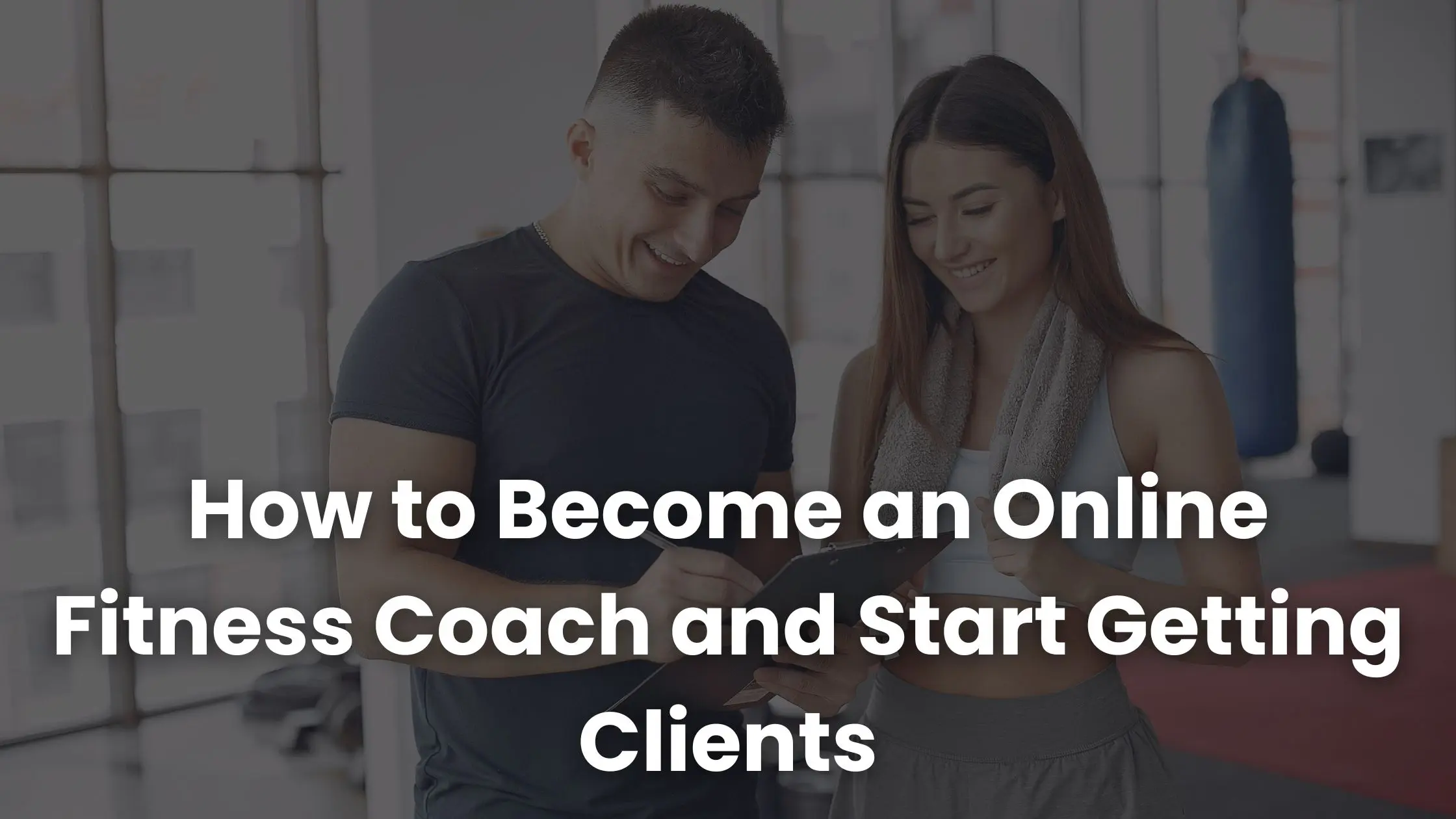
Do you think becoming an online fitness coach requires a massive following or years of gym experience? Think again.
You don’t need a fancy gym, a celebrity client list, or even thousands of followers to start.
With only a few impactful hours and willingness to get certified, you’ll be creating a lasting impact as an online fitness personal trainer.
Ready to know how? Let’s get into it.
An online fitness coach helps clients improve their health, fitness, and lifestyle through virtual coaching.
This enables the coach to guide clients regardless of their location, and it works. In fact, 70% of clients who hire an online fitness coach achieve their results within 6 months.
That means you have a tremendous opportunity to scale your coaching business and make a meaningful impact.
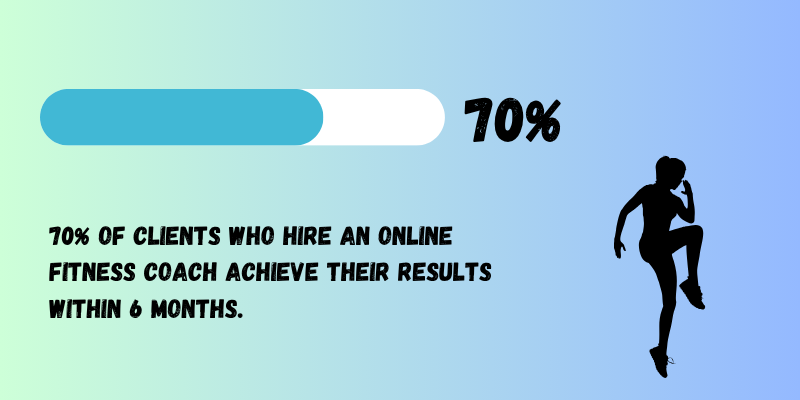
An online fitness coach acts as a mentor, accountability partner, and even an educator. This means the role of a fitness trainer varies depending on the client's needs. However, typical includes:
Now, the most important part of the article is how to become an online fitness coach. Let’s take it step by step
Trying to help everyone is the fastest way to help no one. That’s why niching down is important for new fitness coaches. It provides clarity, fosters trust, and enhances the effectiveness of your marketing. Reports suggest that coaches specializing in a particular niche earn an average of 38% more than generalists.
Instead of being “a fitness coach,” you could become “the go-to coach for busy moms losing weight post-baby” or “the strength coach for weekend athletes.”
Some popular niches that you can explore include:
To pick the best niche for yourself, combine what you love doing, what you’re skilled at, and what people are already paying for.

Before launching, get the business basics in order. Start with your organizational framework.
You can go for a sole proprietorship, as that’s simpler, but LLCs offer better liability protection. Moreover, register your business name and secure a domain and social media handles so that no one else can claim business ownership.
Next, you need to be prepared legally:
After obtaining your business name and legal documents, you must establish systems to receive payments and communicate with clients.
Some popular systems that you can use include:
Create a lean budget for your coaching business. Remember, you don’t need any fancy gear to start. Focus on getting a smartphone with a high-quality camera, reliable Wi-Fi, and a simple landing page or profile.
Anything else you need can be added as your business scales.
Decide what value you’ll provide and how it’ll be delivered. Clear, structured offers make your services more appealing and easier to sell. Some standout online coaching formats include:
You typically have two pricing options: you can either be paid per hour, e.g., $100 per hour, or charge based on the transformation.
The price range for online 1:1 coaching is between $150 and $300. For group programs, the cost ranges from $50 to $150, and for challenges, it's $20 to $99.
Pro Tip: Don’t undercharge. Confidence in your offer justifies the price.
You don’t need a million followers. All you need are the right followers who trust you. Here’s how you can begin your journey:
Pick only 1 to 2 colors to create consistency. This also helps embed your brand identity in the mind of readers. Moreover, use the same fonts and tone throughout the page.
These minor changes can make a big difference. Research suggests that proper and consistent typography can increase readability by up to 20%.
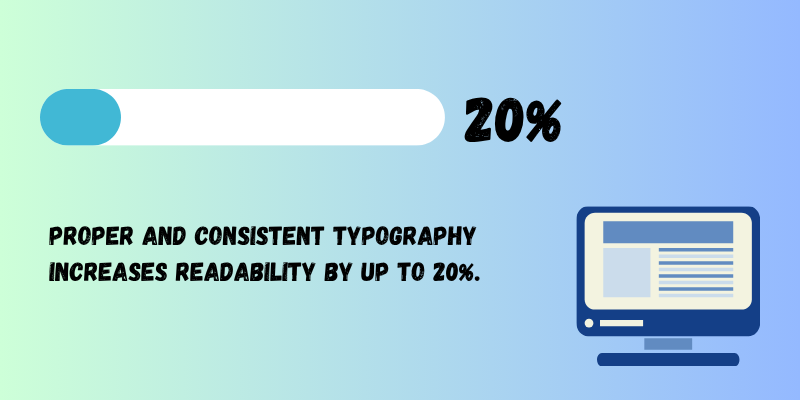
If you’ve already been training clients in person, bring them online with clear benefits, such as increased flexibility, lower costs, and the ability to track progress digitally. Post their testimonials on the website to build trust with potential clients.
Utilize reliable coaching apps to deliver workouts and Google Sheets for tracking progress. For communication, WhatsApp and Zoom are two of the best platforms.
Most importantly, don’t make the shift feel forced.
Ease clients into the change by offering a free trial week and guiding them through the process during a call. When clients see the value firsthand, they’re more likely to make the switch with confidence.
Once you have 5 to 10 steady clients, it’s time to think about how you can scale it further. For that, the best approach is to offer a self-paced digital course using tools like Coursebox.
The best part is you don’t have to do it all by yourself, all thanks to AI. With Coursebox’s AI Video Generator, you can create high-quality workout videos without needing a full production setup.
Just write your script or upload existing content, and this tool will automatically generate professional-looking videos. This means no more hours spent editing or hiring expensive videographers.
With the online fitness market growing at an exponential rate, you have a golden opportunity to expand your services and reach. In fact, according to The Business Research Company, the online fitness market is expected to reach $119.58 billion by 2029.

Building your client base doesn’t have to be overwhelming. Here’s how you can do it with the best possible strategies:
Reaching out to people you know is often the fastest way to land your first clients (if you don’t already have one).
Send personalized messages like:
“Hey [Name], I’ve launched my online fitness coaching. If you know anyone who might benefit, I’d love to offer them a free week's trial.”
Offer something of value that showcases your coaching style. For instance, a:
This is a proven tactic, backed by coaching experts. They say hosting events consistently boosts client sign-ups by converting paying participants into customers.
Join discussions in Facebook fitness groups, Subreddits like r/fitness or r/personaltraining, and Twitter fitness chats.
Provide genuine help without any direct promotions. When people see your expertise and consistency, they’ll naturally become curious about what you offer.
It is one of the most underrated ways to build authority and find new clients.
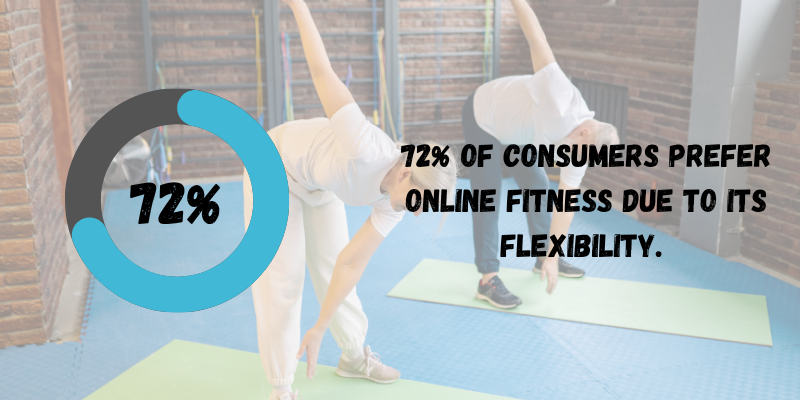
A report by RunRepeat shows that 72% of consumers prefer online fitness due to its flexibility. This means you have a wide pool of potential clients waiting to be picked.
To leverage social media, don’t just post workout videos. Share testimonials, tips, and real-life stories. Honest before-and-after posts can build credibility.
Instagram and TikTok are the most powerful platforms for coaching and promoting courses, especially for fitness coaches. Use relevant niche hashtags (#BusyMomFitness, #PostnatalStrength to reach your ideal clients. Also, engage with followers through DMs to answer questions and build long-term relationships.
Create a small cohort (e.g., five people) and offer them discounted coaching. You can use this as a “Founding Client Challenge”.
Another highly effective method is offering a generous discount in return for testimonials. For example, set the price to $199 without testimonials and $129 for individuals willing to provide solid testimonials with proof.
While you can start coaching online without a certification, it is not recommended. Certification is proof that you understand the science behind what you’re teaching.
Online fitness coaching is not just about giving advice or sharing workouts. It also involves designing customized workout plans, adjusting routines based on a client’s health conditions, and sometimes advising on basic nutrition.
These responsibilities require in-depth knowledge of anatomy, exercise science, and safe training methods. You can only get them through professional certifications.
Imagine a client suffers an injury while following your program, and you’re not certified. In this scenario, you could face legal trouble such as vicarious liability. It is a legal principle that can make you responsible for the damaged caused by your advice or negligence.
That’s why it’s always recommended to pursue a certification to know exactly what you’re getting into. It can also increase your income by 20% or more, depending on how well you learn.
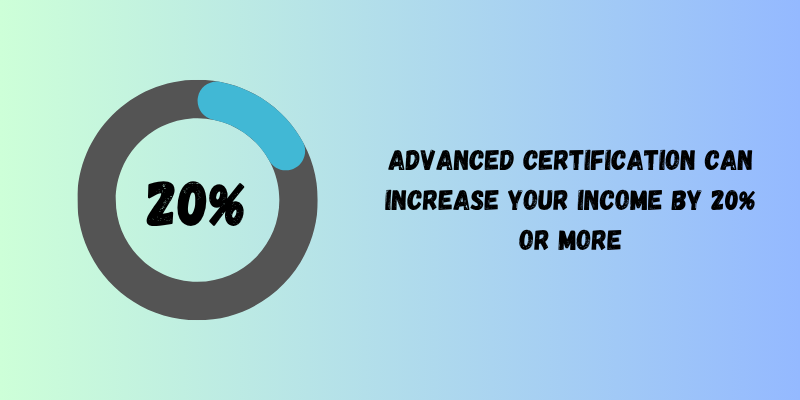
Reputable certifications teach you proper methods, exercise forms, injury prevention, and client assessment through different training modules. Some of the most recognized certifications are:
Most of these programs are available online and can be completed in 3 to 6 months.
Yes! Getting liability insurance is essential for online fitness coaches.
Liability insurance is basically a safety net that protects you in case a client gets injured and files a compensation claim.
Most fitness liability policies cover things like:
This kind of coverage helps you manage risk confidently and keep your business protected. It also shows your clients that you take their safety seriously.
Becoming a successful online fitness coach doesn’t happen overnight. It takes consistency, the right systems, and a real connection with your clients.
However, to build a genuine connection, you need to be where your clients are. You can use YouTube for this purpose. By posting free, value-packed videos, such as tips, or progress breakdowns, you can attract and build trust with your ideal audience even before they become paying clients.
And this is exactly where Coursebox becomes your game-changer.
With our AI-powered video generation tool, it’s easy to turn your PDFs or course materials into engaging YouTube content. These videos not only provide structure for your viewers but can also be repurposed into full video courses for the clients you onboard.
Get started with Coursebox for free, and deliver training that’s tailored to every learner.
Not necessarily. Many clients prefer working out at home with minimal equipment, like resistance bands or dumbbells. As an online fitness coach, focus on creating adaptable routines and offering equipment-free alternatives to make your coaching more accessible to a wider audience.
A good rule of thumb is to dedicate 1 to 2 hours per client each week, depending on the service level. This includes:
You can also opt for video calls to ensure they are following the program and using the correct form for each exercise.
Yes, you can coach beginners online if you follow a structured approach. Here are some practical tips for you:
When booking, please inform the client that cancellation and rescheduling require at least 24 hours' notice. If a client cancels too late or misses a session, you can offer one grace session the first time. However, if that happens again, count it as used. Additionally, consider using booking platforms like Calendly to automate reminders and minimize no-shows.
